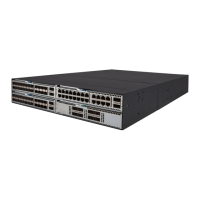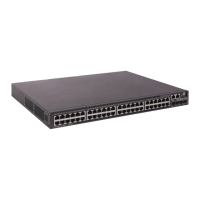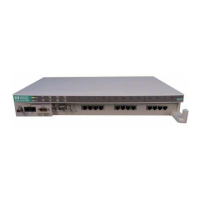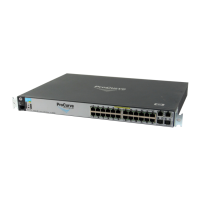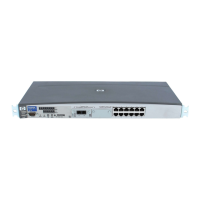28
2. Enable RIP and enter RIP
view.
rip
[ process-id ] [
vpn-instance
vpn-instance-name ]
By default, RIP is disabled.
3. Enable RIP on a network.
network
network-address
[ wildcard-mask ]
By default, RIP is disabled on a
network.
The
network
0.0.0.0 command
can enable RIP on all interfaces in
a single process, but does not
apply to multiple RIP processes.
Enabling RIP on an interface
1. Enter system view.
system-view
N/A
2. Enable RIP and enter RIP
view.
rip
[ process-id ] [
vpn-instance
vpn-instance-name ]
By default, RIP is disabled.
3. Return to system view.
quit
N/A
4. Enter interface view.
interface
interface-type
interface-number
N/A
5. Enable RIP on the interface.
rip
process-id
enable
[
exclude-subip
]
By default, RIP is disabled on an
interface.
Controlling RIP reception and advertisement on interfaces
1. Enter system view.
system-view
N/A
2. Enter RIP view.
rip
[ process-id ] [
vpn-instance
vpn-instance-name ]
N/A
3. Disable an interface from
sending RIP messages.
silent-interface
{ interface-type
interface-number |
all
}
By default, all RIP-enabled
interfaces can send RIP
messages.
The disabled interface can still
receive RIP messages and
respond to unicast requests
containing unknown ports.
4. Return to system view.
quit
N/A
5. Enter interface view.
interface
interface-type
interface-number
N/A
6. Enable an interface to
receive RIP messages.
rip
input
By default, a RIP-enabled
interface can receive RIP
messages.
7. Enable an interface to send
RIP messages.
rip output
By default, a RIP-enabled
interface can send RIP
messages.

